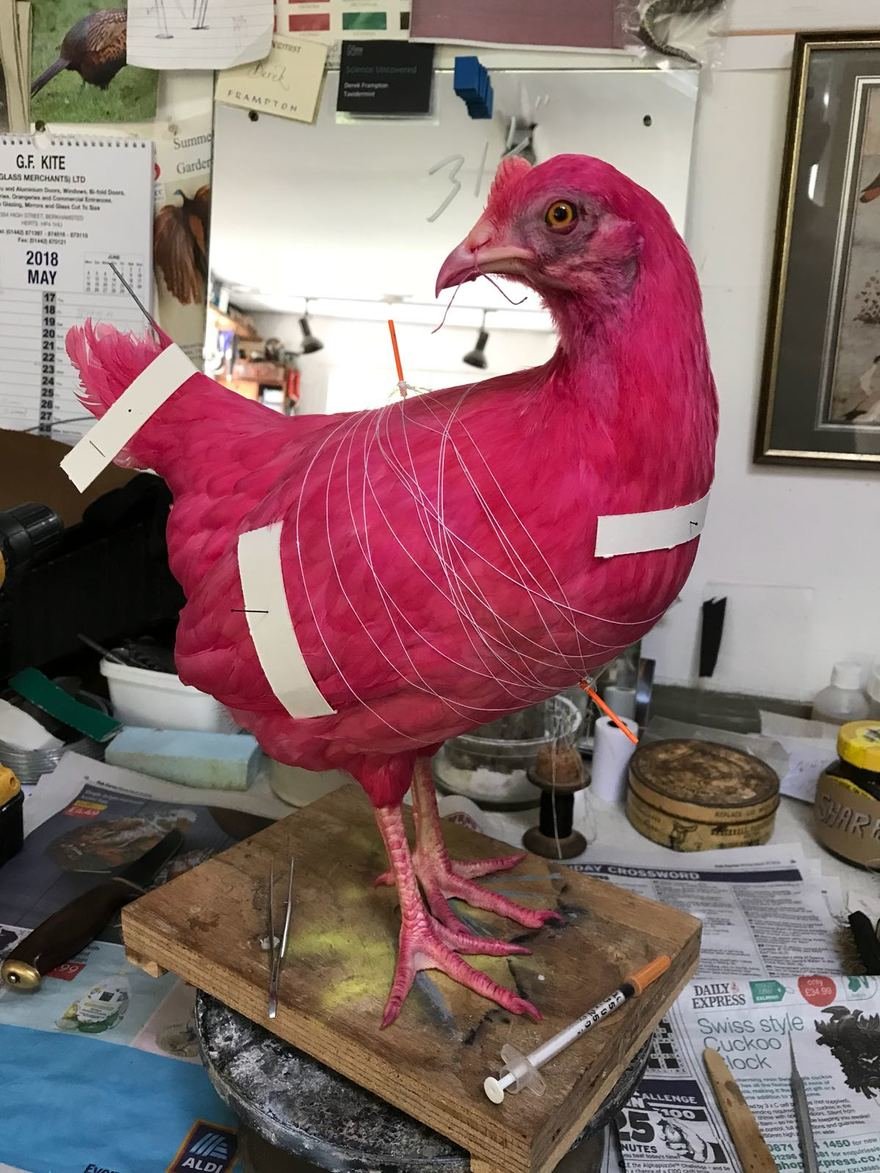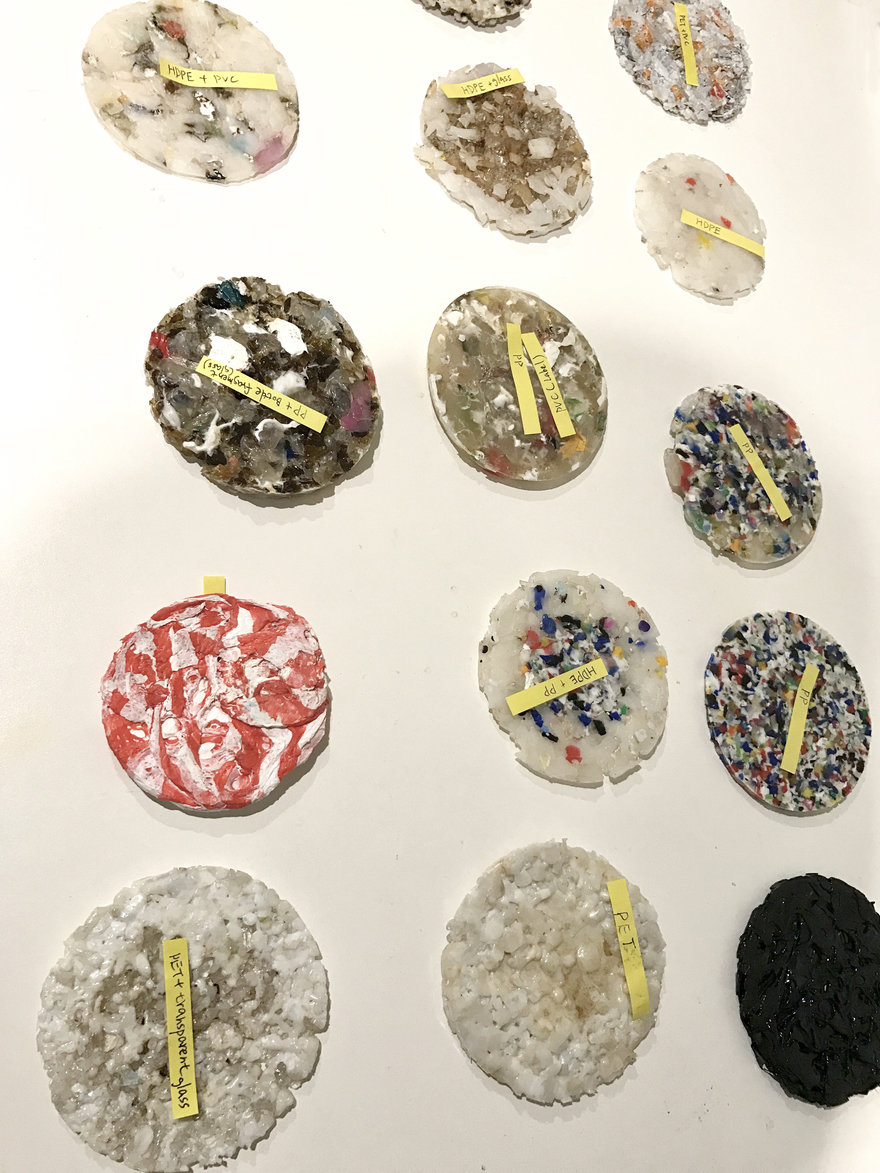
Central Saint Martins MA Materials Future Grad Projects Explore the Future of Food, Tech & Waste Management
Lovely and occasionally dystopian materials inspiration
Following their intimate exhibition on the ground level of Ventura Future during Milan Design Week, Central Saint Martins' 2018 MA Materials Future graduate products are now publicly on display at their Degree Show until June 24. Many of the students sill needed to add final touches to their projects on display in Milan, so it's exciting to see the final versions of what was previewed at the show. We found that a majority of the projects deal with handling specific types of waste, while many others investigate data, food futures and DNA modification. We've featured an assortment of projects below, but if you happen to be in London, we highly suggest paying the full exhibition a visit in real life.
Food Futures and Biotech
 Enter a caption (optional)
Enter a caption (optional)This is grown. / Bioweave by Jen Keane utilizes microbes to weave a new, hybrid material. The developed "microbial weaving" technique allows the maker to weave the warp and the bacteria to weave the weft, creating a strong and lightweight. This project acts in collaboration with nature, but throughout the process Keane also recognized and considered a likely future in which we completely control the way natural elements perform.
 Enter a caption (optional)
Enter a caption (optional)This is what chickens should start looking like, according to Linnea Våglund's Pink Chicken Project. For this project, Våglund explored using the CRISPR gene-drive technique to genetically alter the color of chickens. Once this gene is introduced, it has the ability to spread to the whole chicken population within just a couple of years. "What's the point?" you may ask? The altered color of the chicken brings more attention to the non-consensual genetic modification to our food than a modification only seen from within, and the spreading of the gene would highlight our reliance on factory farming.
 Enter a caption (optional)
Enter a caption (optional)In China, consumption of ants, wild Black Ants in particular, is quite common, as the practice is said to alleviate many health conditions, including arthritis and hepatitis. Pharma-ant by Ke Fu is a new method of farming wild Black Ants so that they hopefully wouldn't need to be hunted by traditional Chinese ant hunters anymore.
Re-Using Waste and Challenging Traditional Production Methods
 Enter a caption (optional)
Enter a caption (optional)After learning that on average, people in the UK throw away their own body weight in trash every seven weeks, Chih-Chia Chang realized that in order for society to become aware of and accountable for our waste, we need to establish a more personal relationship with it. So, for her project Myself, my life and my trash, she created new composite materials out of her own personal trash. The results are quite lovely.
 Enter a caption (optional)
Enter a caption (optional)Manufactured Geology bu Garance der Markarian is a rock making machine that recreates the geological phenomenon of sedimentation with dust in order to question current manufacturing processes.
 Enter a caption (optional)
Enter a caption (optional)The new ban of foreign imported garbage to China has made it difficult for some countries to find places for their waste. Foreign Garbage by Katie May Boyd explores the politics around this specific waste predicament by creating beckoning cats—a product symbolic of the Made in China label—out of waste intended to be sent to China.
 Enter a caption (optional)
Enter a caption (optional)Wine Matters by Ludovica Cantarelli creates packaging for wine using waste grape skins and branches leftover from the winemaking process. Red wine is even used as the ink and dye for the labels!
 Enter a caption (optional)
Enter a caption (optional)Have you ever thought about how much urine we all produce on a daily basis? I haven't either, but Sinae Kim's This is urine is a new process that uses the natural, untapped material as glaze for ceramics. It'd be fitting to subtly outfit your bathroom with the above vessels...
 Enter a caption (optional)
Enter a caption (optional)Rice husk waste is typically burned away in China, which contributes a large part to the country's annual haze and declining health. Increasing the value of rice husk by Lulu Wang provides an alternative to this burning method. Wang extracts the starch from the rice husks and uses it as the binder to create pencils, disposable chopsticks and other household products.
Data and Technology
 Enter a caption (optional)
Enter a caption (optional)Davide Piscitelli asked a Google Home what it's dream was, and it replied, "I've always wanted to sing a duet with Stevie Wonder." Most people would have moved on confused, but Piscitelli decided to turn this statement into GOGO's Dream, a project in which the designer created a machine called GOGO whose only purpose is to make the Google Home's dream a reality. Piscitelli's goal with this satirical approach is to, "critically question the wider ethical and moral implications of a mass adoption of these potentially exploitative and manipulative devices globally."
 Enter a caption (optional)
Enter a caption (optional)Digitized Material by Lindsay Hanson proposes how advances in graphene and photonc crystal technology could lead to the creation of color changing yarns and textiles. The combination of graphene and a synthetic version of photonic crystals has the potential to yield amazing color-changing garments, as graphene is an extremely strong super conductor and natural photonic crystals are a contributor to the beauty of things like colorful beetle shells.
 Enter a caption (optional)
Enter a caption (optional)Made in our image: Love and cruelty with robots by Nina Cutler explores the effect household robots would have on our day-to-day lives if they a) became the norm for every household b) actually resembled humans and not just smart fridges and c) really did learn and react to human emotions.
Learn more about Central Saint Martins' MA Materials Futures Degree Show here.
-
oFavorite This
-
QComment
K
{Welcome
Create a Core77 Account
Already have an account? Sign In
By creating a Core77 account you confirm that you accept the Terms of Use
K
Reset Password
Please enter your email and we will send an email to reset your password.

